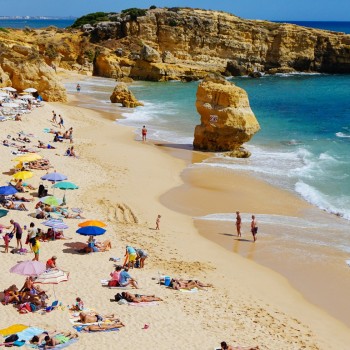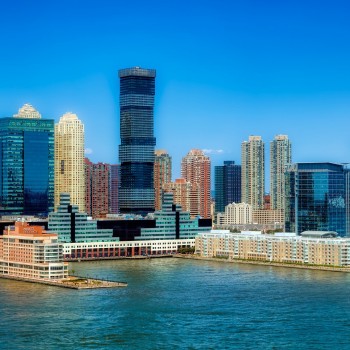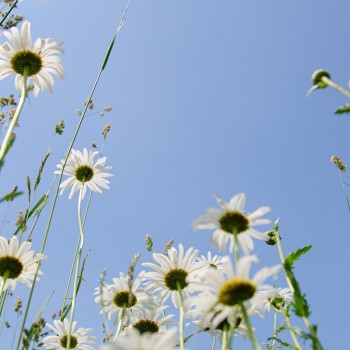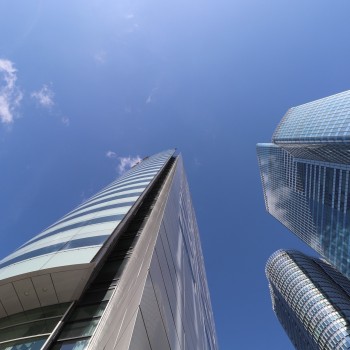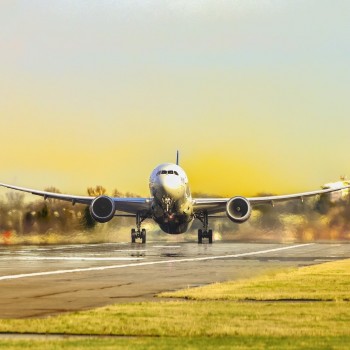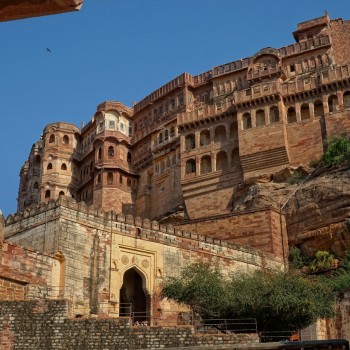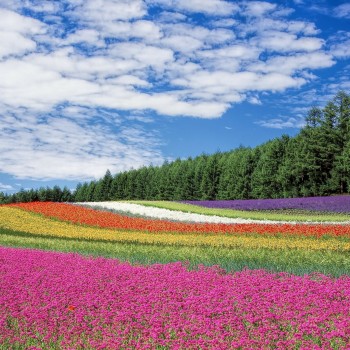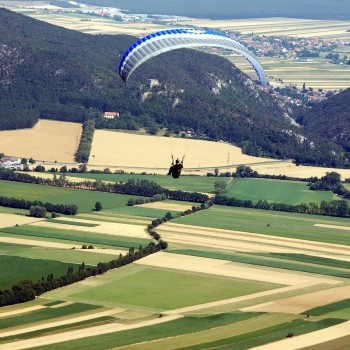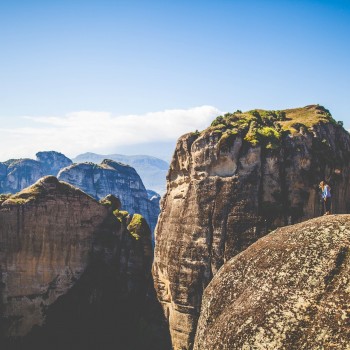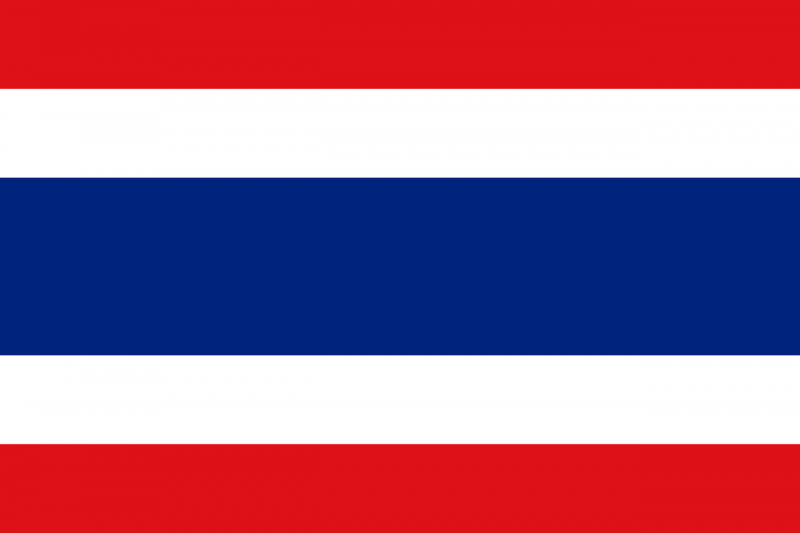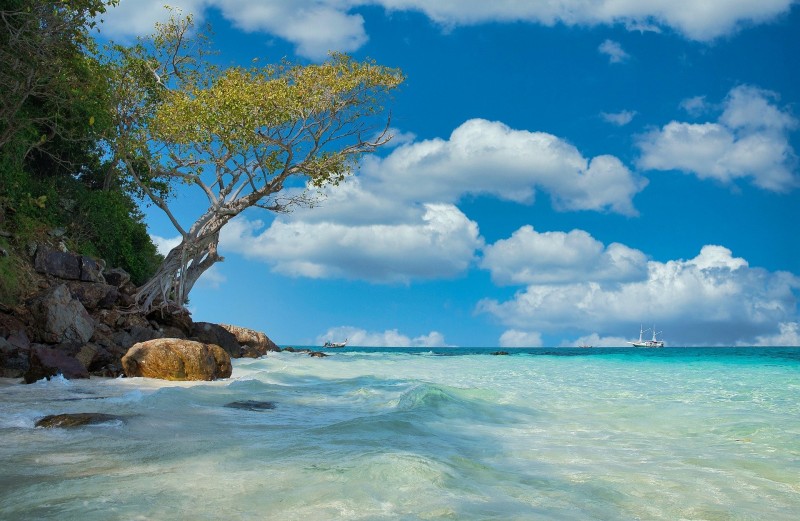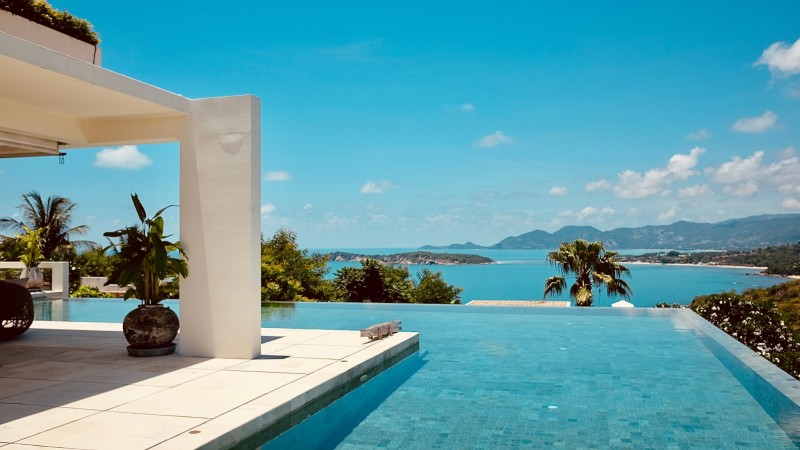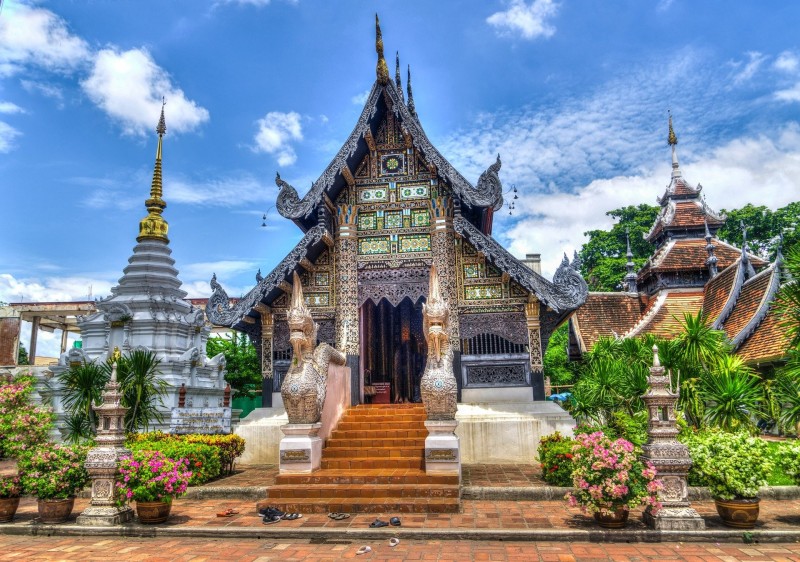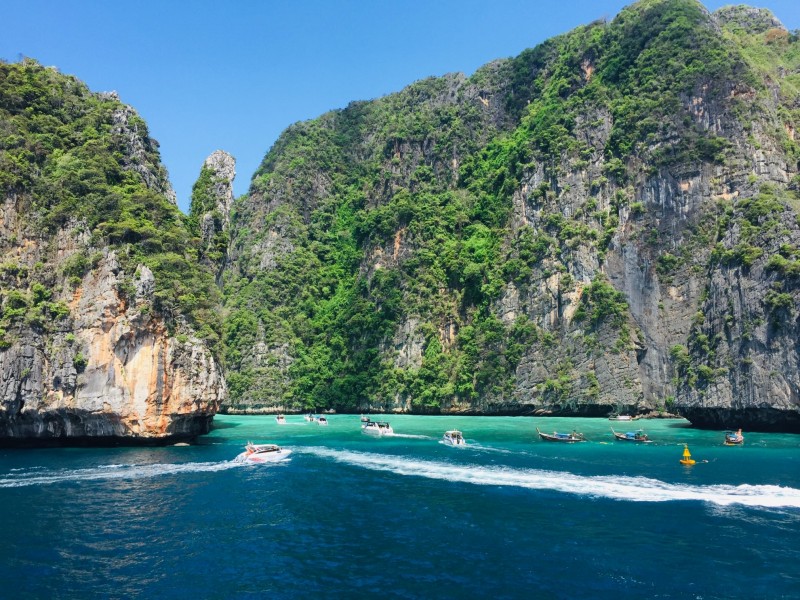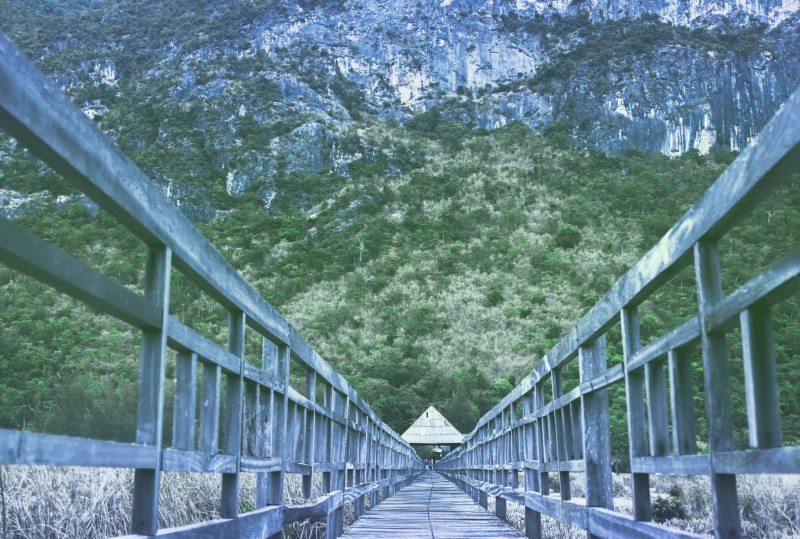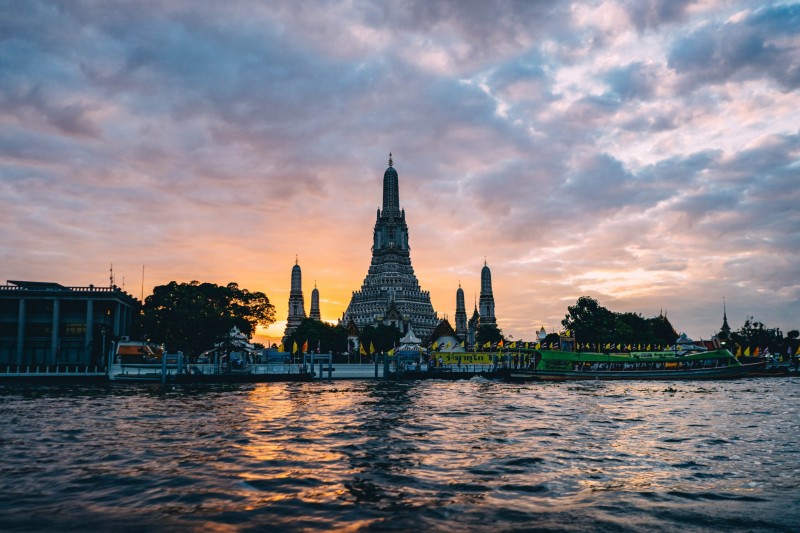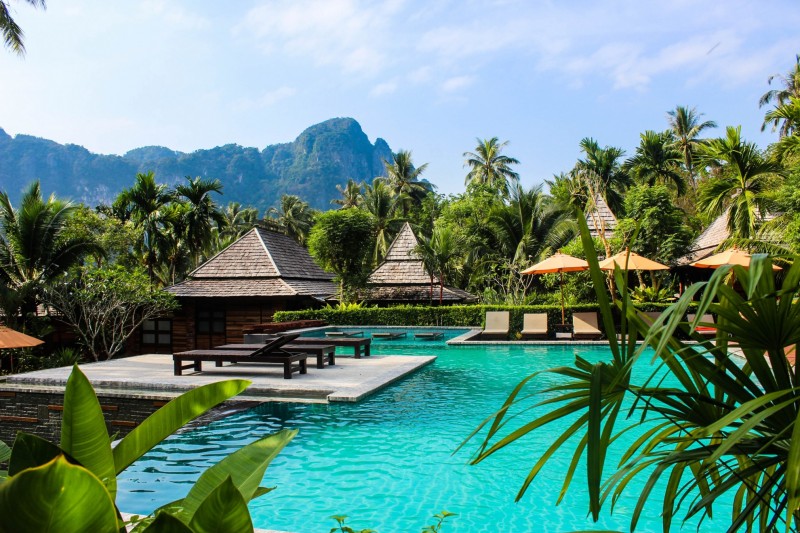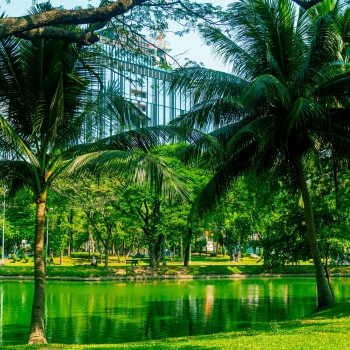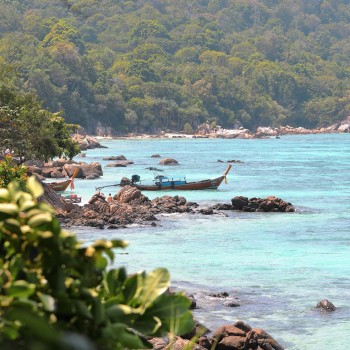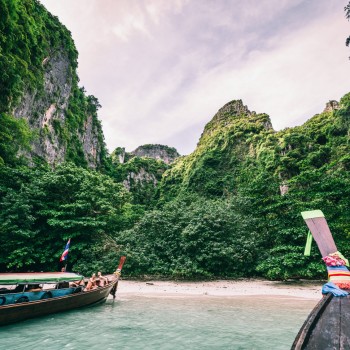Thailand
Thailand
Capital city description
Bangkok, the capital of Thailand, is one of the biggest and most lively cities in Southeast Asia. The city, also known as the City of Angels and Venice of the East, has many sightseeing opportunities, shopping, eating, and nightclubbing.
There are more than 400 Thai temples or wats situated all around Bangkok. The most famous temples that you must see while visiting Bangkok are Wat Phra Kaew (Temple of the Emerald Buddha), Wat Pho (Temple of the Reclining Buddha), and Wat Arun (Temple of Dawn). Furthermore, Bangkok is home to countless incredible top tourist attractions.
Climate
The climate of Thailand is tropical, with three distinct seasons: a hot season from March to mid-May; a rainy season due to the southwest monsoon, which generally runs from mid-May to October; - a dry and relatively cool season from November to February, when the northeast monsoon, coming from the Asian continent, prevails.
As a result, Thailand's weather consists of six months of rainfalls during the wet season, three months of dry and cooling breezes during the winter, and three months of heat during the summer. The average temperature of Thailand ranges from 18 to 38°C.
Languages spoken
Thai, or Siamese Thai, is the primary and official language of Thailand, spoken by over eighty percent of the country’s sixty million people.
Fun/Fascinating Facts
- The name Thailand in the Thai language is Prathet Thai, which means ‘Land of the Free.’ This country is the only country in the whole of South-East Asia that any European nation has never colonized.
- Thailand used to be known as the Kingdom of Siam and were Siamese cats originated from. The Thai people seem fascinated by these cats, and a 14th- century poetry book describes how there used to be 23 different types of Siamese cats, although there are only six nowadays.
- Thailand is home to a fish that can walk on land! It’s called Cryptotora thamicola, also known as the blind, waterfall-climbing cavefish, uses its two front and two back fins to propel itself up waterfalls. It can only be founded in Mae Hong Son province, Northern Thailand.
- In November, there is an annual Lopburi Monkey Banquet hosted in front of Pra Prang Sam Yot temple in the province of Lopburi. The locals invite over 600 monkeys to feast on a buffet of over two tonnes of delicious food that the locals have all been lovingly prepared. The monkeys’ menu consists of rice, tropical fruits, salad, grilled sausages, and even ice cream. The festival is hosted because good luck will follow from treating the furry creatures with respect.
- In Thai culture, the head is considered the most crucial part of the body. As a sign of respect, no one should ever touch the head of another person, even a child.
Unique Customs/Traditions
- Thai are extraordinarily polite and have their ways of showing respect. They use the gesture called wai, a Thailand traditional practice to show respect to people. When talking with each other, they have words that indicate a person’s age: pee is used before an older person’s name to show respect and nong for somebody younger than them.
- The traditional Thailand clothing is called chut Thai, which means “Thai outfit.” Men, women, and children can wear it. There are several types of chut Thai for women; each has different styles, garments, patterns, and accessories. Some Thai outfits can be worn on formal occasions, while others are commonly more associated with particular events. The chut Thai for women are Ruean Ton, Chakkri, Siwalai, Boromphiman, Chitlada, Amarin, Chakkraphat, Dusit, and for the men, chut Thai is known as suea phraratchathan (“royally-bestowed shirt”). The shirt is buttoned, has an extended collar, and can have sleeves of any length.
- Pointing is not acceptable in Thailand. Your Thai friends won’t take offense if you point when joking around, as they will understand that you may point instinctively as a foreigner. However, don’t point at monks or pictures of any of the Royal Family, and as a general rule, don’t point at people to refer to them. If you need to point someone out, bend your hand downwards with your fingers leaning toward the floor and your palm facing upward instead of extending your finger.
- You mustn’t touch a Thai person’s head or ruffle their hair. If you do accidentally touch a person’s head, please apologize immediately. In Thailand, the head is considered an essential part of the body and not be touched without permission.
- Thai people are very superstitious; they strongly believe in ghosts. For instance, they believe that a ghost will take the baby away if you call a baby cute. They also give babies a nickname to trick evil spirits that may want to steal the baby.
Popular universities
| Name | Description | |
|---|---|---|
| Mahidol University | Mahidol University (MU), an autonomous research institution in Thailand, had its origin in the establishment of Siriraj Hospital in 1888. Mahidol is among Thailand's most prestigious universities with highly competitive entrance examinations. Mahidol University (MU) offers courses and programs leading to officially recognized higher education degrees such as pre-bachelor degrees (i.e., certificates, diplomas, associate or foundation), bachelor's degrees, master's degrees, doctorate degrees in several areas of study. | |
| Chulalongkorn University | Chulalongkorn University is Thailand's oldest and one of the country's most prestigious universities. On March 26, 1917, it was officially established by King Vajiravudh (Rama VI) and named after his father, King Chulalongkorn (Rama V). Chulalongkorn University opened with four faculties, Medicine, Public Administration, Engineering, and Arts and Sciences, and 380 students. Today, the university consists of 18 faculties, three schools, three colleges, and six institutes with more than 32,500 undergraduate and graduate students. | |
| Chiang Mai University | Chiang Mai University (CMU) is a public higher education institution in Thailand, established in 1964 in Chiang Mai. Chiang Mai University (CMU) offers courses and programs leading to officially recognized higher education degrees such as bachelor's degrees in several areas of study. | |
| Kasetsart University | Kasetsart University is a non-profit public higher-education institution known internationally for academic excellence and work of world standard. It is a prime mover in mustering intellectual resources to help the nation achieve sustainable development and negotiating power in the world community. Kasetsart University gathers wisdom and knowledge, creates and develops various bodies of knowledge, and forms intelligent, who reason, who behave morally, who are conscious of the common good, and who produce high standard work capable of competing in the world market. Kasetsart University (KU) offers courses and programs leading to officially recognized higher education degrees such as pre-bachelor degrees (i.e., certificates, diplomas, associate or foundation), bachelor's degrees, master's degrees, doctorate degrees in several areas of study. | |
| Prince of Songkla University | Prince of Songkla University (PSU), the oldest university in southern Thailand, known as Mahawitthayalai Songkhla Nakharin in Thai, was founded in 1967 and is named in honor of His Royal Highness Prince Mahidol Adulyadej, Prince of Songkla, who died in 1929. The institution has five Hat Yai, Pattani, Phuket, Trang, and Surat Thani campuses. The first permanent campus was established in Pattani in 1968, and today the campuses cover a total area of more than 620 hectares. The university comprises 39 faculties, colleges, and institutes. It has four hospitals and boasts more than 40 excellence and research centers. Prince of Songkla University (PSU) offers pre-bachelor degrees (i.e., certificates, diplomas, associate or foundation), bachelor's degrees, master's degrees, doctorate degrees in several areas of study. | |
| Thammasat University | Thammasat University (TU) is the second oldest leading comprehensive university in Bangkok, Thailand, established in 1934. Over the 80 years since its founding, Thammasat University has evolved from an open university for law and politics to an international university offering all academic degrees in many fields and disciplines. Thammasat today provides more than 240 educational programs in 33 different faculties and colleges on four campuses. | |
| Khon Kaen University | Khon Kaen University ( KKU)is a public research university in Khon Kaen, Thailand. It was the first university established in 1964 in northeastern Thailand and remains the oldest and largest university. It is a widely recognized university in Asia. Khon Kaen University (KKU) offers a wide range of programs: its comprehensive academic program offers 105 undergraduate majors, 129 master's degree programs, and 59 doctoral programs. | |
| Naresuan University | Established in 1969, Naresuan University, located in the small city of Phitsanulok, is a government university accredited by the Office of the Commission on Higher Education, Ministry of Education, is a comprehensive university comprising 16 faculties, three schools, one college, and one institute. They are clustered into the Health Sciences Cluster Science and Technology Cluster and the Social Sciences Cluster. | |
| Srinakharinwirot University | Srinakharinwirot University (SWU) is a public university in Bangkok, Thailand. Founded in 1949, the university was the first upper-education institution to concentrate solely on teacher training. The university offered undergraduate degrees in education, humanities, social science, science, physical education, and graduate degrees. | |
| Asian Institute of Technology | Established in 1959, The Asian Institute of Technology (AIT) is an international English-speaking postgraduate institution focusing on engineering, environment, and management studies, located in the small city of Klong Luang. AIT’s rigorous academic, research, and experiential outreach programs prepare graduates for professional success and leadership roles in Asia and beyond. AIT’s internationally recognized engineering, environment, and management graduates are highly sought after by employers in their home country and elsewhere. | |
Festivals & Events
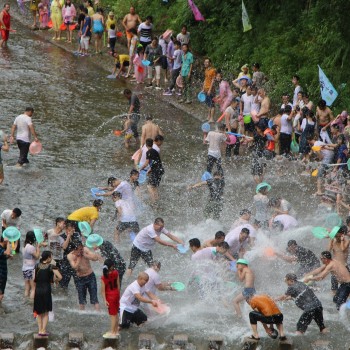
Songkran Festival
Date: April
The Songkran Festival, or the Water Festival Thailand, is one of the most fun festivals celebrated nationwide through various exciting events! This long and large festival involves a 3-day water fight in which people partake across the country. With drinking, music, dancing, and people drenched from head to toe, people use buckets, hose pipes, water guns, and anything else that they can get their hands on to use to splash water on others. Traditionally, people return to their families and respect the elders by pouring a little scented water on their hands.
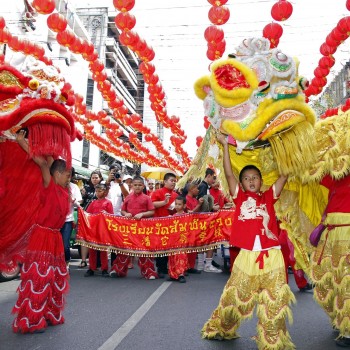
Chinese New Year
Date: February
Thailand welcomes the New Year with various kinds of colorful events nationwide. The celebrated Chinese New Year is one of the most exhilarating Thailand festivals witnessed in Yaowaraj, Bangkok's official Chinatown. You can catch the dragon and lion dancers, see the exploding firecrackers, be amazed at iconic red Chinese lanterns, experience the exciting fanfare, and enjoy mouth-watering Chinese banquets during the events.
.jpg)
Chiang Mai's Yee Peng Lantern Festival
Date: November
Chiang Mai’s Lantern Festival celebrated on the full moon of the 12th month of the Thai lunar calendar, is one of the most impressive sights you will ever see in Thailand. People gather down by the banks of the Peng River and release thousands of paper lanterns into the sky and watch them float away in the gentle evening breeze. You can also witness religious ceremonies, firework displays, parades, and the release of paper boats in the river.
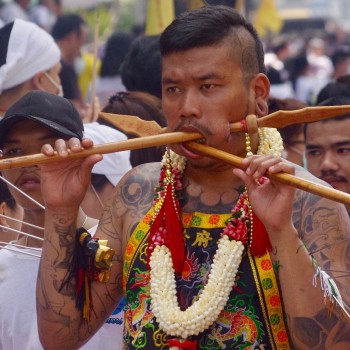
Phuket Vegetarian Festival
Date: September or October
The Phuket Vegetarian Festival is a colorful annual event held on the 9th lunar month of the Chinese calendar. The festival celebrates the Chinese community's belief that abstinence from meat and various stimulants will help them obtain good health and peace of mind.
Phuket Vegetarian Festival is one of the prominent festivals in Thailand, and during a month before it, people refrain from consuming meat, garlic, onions, etc. This month is followed by a grand celebration when people involve themselves in gruesome activities like knives and pierced faces.
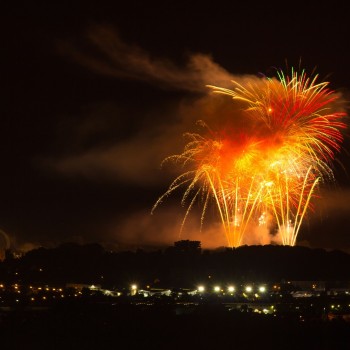
Boon Bang Fai- Rocket festival
Date: May
The Rocket Festival is a well-known festival in Thailand that is significant to the farming communities of Issan, as the rockets are meant to encourage the gods to bless them with plentiful rains in the northeastern part of the country. Intricate rockets are built and paraded around on the first day of Boon Bang Fai and then launched high into the air throughout the weekend.
Rocket festival is the most dangerous yet thrilling festival in the country. Every Rocket Festival is loaded with live folk music, beauty pageants, local rice wine drinking, a party full of fun and frolic, and of course, the unique rockets competition. The lucky person whose rocket soared highest wins a big cash prize, but those whose rockets failed to launch are thrown into a mud-bath as punishment.
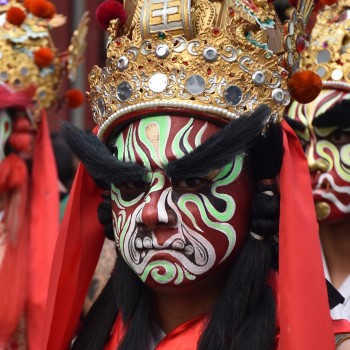
Phi Ta Khon
Date: June or July
Phi Ta Khon also referred to as the 'Ghost Festival' of Thailand because of its embrace of the macabre, Phi Ta Khon takes place in the small town of Dan Sai. It is a three-day festival observed by colorful masks in the 6th full moon of the Lunar calendar.
These masks are painted in flashy, eye-catching colors and large phallic noses. Locals believe that the loud noises will awaken the spirit of the Mun River who protects their town. There are enormous parades, beauty pageants, and music performances on the first two days of the festival following by a more somber day of Buddhist ceremonies.
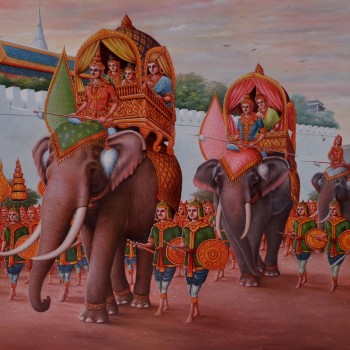
Surin Elephant Festival
Date: November
Surin Elephant Festival is specially celebrated for the friendly giant animals of Thailand. Elephants have been an integral part of this country's history; they were used in battle, aided in agriculture, and even used for travel. In connection with this, the Hindu deity of Ganesha, a god mainly worshipped by traders and merchants for commercial ventures, is hugely famous and honored in most towns.
This elephant festival in northeast Thailand sees massive parades of elephants lovingly fed with fruits and vegetables with marching bands and elephant shows. It is one of Thailand's festivals that tourists reflect the cultural and historical significance of the country.

Lopburi Monkey Banquet
Date: November
Lopburi Monkey Banquet is a unique food festival celebrated for the many monkeys that reside at the Lopburi. It is one of the fascinating Thailand festivals. Legend has it that the Hindu deity Hanuman saved a god's daughter from a demon in Thailand, and monkeys have been gladly welcomed here ever since. They are most commonly found in ancient towns like Lopburi, located 150 kilometers north of Bangkok.
In Lopburi, the local people conduct a vast monkey banquet every November to celebrate these apes. A huge banquet is laid out for about 3,000 monkeys that live in this part of Thailand, giving them a day to feast on 4 tons of fruits, vegetables, and an array of other treats.
Attractions / Top Sights
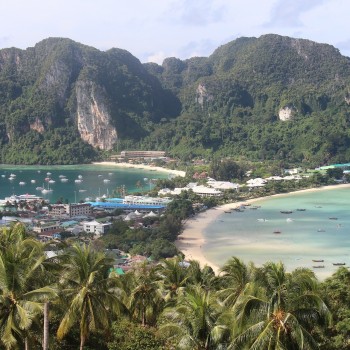
Koh Phi Phi Island
When to visit: December to April
Phi Phi is a beautiful archipelago located in the Krabi Province, not too far from Phuket. The Phi Phi Islands are one of Thailand's most popular resorts due to their clear blue waters, soft sand, and endless breathtaking views. Koh Phi Phi Don is the only island with permanent inhabitants, while the smaller Koh Phi Phi Leh is famous as the filming location for the 2000 movie "The Beach."
Travelers enjoy the beaches and experience various water recreation activities, such as snorkeling, scuba diving, and kayaking. One of the most fun sites on Koh Phi Phi is Monkey Beach, where you'll come face to face with plenty of mischievous and naughty macaques.

Grand Palace
When to visit: December through February
One of the most famous attractions in the bustling city of Bangkok is the well-known Grand Palace. Since 1782, the Grand Palace was the official residence of the Kings of Siam and, later, became the royal court and administrative seat of government of Thailand. Situated on the Chao Phraya River banks, the walled-in complex contains a compelling series of pavilions, halls, wats, and other buildings interspersed with vast lawns, lavish gardens, and stately courtyards.
The highlight is stunning Wat Phra Kaew, or Emerald Buddha Temple, Thailand’s most sacred Buddhist site, housing a highly-revered Emerald Buddha image carved from a single block of jade, dating back 700 years. Once dark, the illuminated Grand Palace looks incredibly fascinating.

Railay
When to visit: Between mid-October and mid-April
Railay is best known as a rock-climbing destination .located in the Krabi Province on the coast of the Andaman Sea. It offers white sand, turquoise-blue water, and a perfect relaxing paradise.
Railay is well-known for ocean rafting and kayaking, snorkeling, and scuba diving. The island can be reached by boat from Krabi town and Ao Nang. There's also the tourist-friendly Diamond Cave, reached via a beautiful trail with stunning views and ready to accommodate curious visitors looking to do some exploring between stretches of sunbathing.
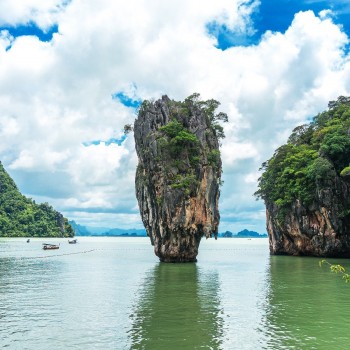
Phang Nga Bay
When to visit: Between mid-October and mid-April
Located in the Andaman Sea, just over 95 km from the island of Phuket, Phang Nga Bay is one of the top tourist attractions in Thailand and one of the most picturesque areas in the country. Protected by a marine national park, with calm, shallow waters and clear conditions, this stunning bay is perfect for boating; It consists of beautiful caves, aquatic grottoes, and limestone islands.
The most famous island in the bay is a sea stack called Ko Ping Kan, better known as James Bond Island, featured in the James Bond movie “The Man with the Golden Gun.” The place is perfect for adventurous kayaking, paddling deep into hidden ‘hongs’ – collapsed cave systems open to the sky.

Thailand's floating markets
Undoubtedly one of the best and unique tourist attractions, Thailand's floating markets which offers a memorable way to do some shopping and eating while supporting local vendors and getting a closer look into a traditional way of life, and a chance to explore the network of canals (khlongs) and stilt-house communities.
There are numerous floating markets near Bangkok, with Amphawa and Damnoen Saduak being among the most popular. Damnoen Saduak is the most popular floating market in Thailand, great for photo opportunities, food, and for giving you an insight into an ancient traditional way of life.
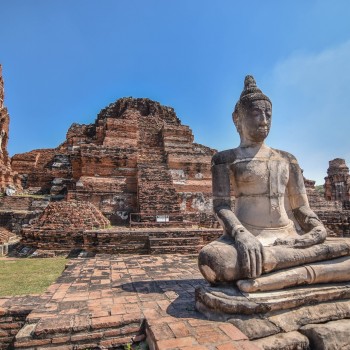
Ayutthaya Historical Park
When to visit: Between mid-October and mid-April
Ayutthaya historical park holds the ruins of the ancient city of Ayutthaya, Phra Nakhon Si Ayutthaya Province. It offers a magnificent peek into the glory of ancient Thailand, where visitors can wander the explore romantic ruins of the former capital city of old Siam.
The magnificently restored Buddhist temples and statues, royal palaces, monasteries, towers, and chedis are mesmerized, displaying an eclectic array of architectural styles. Stunning highlights feature a 39-foot-long reclining Buddha and iconic Buddha head entwined by overgrown tree roots.
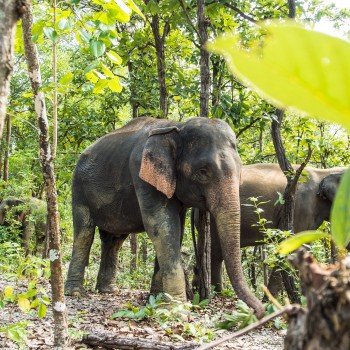
Khao Yai National Park
When to visit: March through May
Thailand brags many beautiful national parks. One of them is the extraordinary Khao Yai National Park- the first official national park established in Thailand and is now the third-largest. It is a World Heritage Site considered one of Asia's most extensive intact monsoon forests.
Stretching across four central provinces, Khao Yai has it all: mountains, lakes, rainforest, grasslands, diverse wildlife and birds, including black bears and hornbills, plus thousands of plant species. Additionally, the park is also home to many waterfalls, including the 150-meter-tall Haew Narok and the even more famous Haew Suwat, which appeared in Leonardo DiCaprio's film, The Beach. Nevertheless, the ultimate drawcard is the enormous population of Asian elephants and a rare opportunity to see these revered creatures wild in their natural environment.
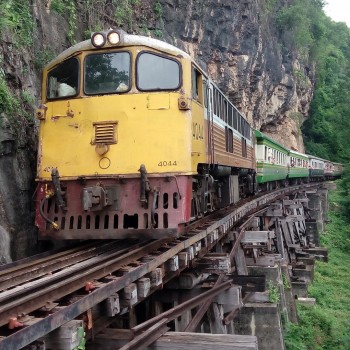
Thai-Burma Railway Death Railway
The notorious ‘Bridge over the River Kwai’ and Thai-Burmese ‘Death Railway,’ built by Allied Prisoners of War during World War II, is Thailand’s most famous train ride. During WWII, the Japanese built the railroad to connect Yangon, the then-capital of Burma.
The two-hour train journey along the notorious Thailand–Burma Death Railway from Kanchanaburi, via the Bridge over the River Kwai, to Nam Tok, is Thailand’s most scenic and most popular train ride. As the name suggests, Death Railway is named after the thousands of men who died in unimaginably harsh conditions during its construction. Though the views are lovely, the history makes the ride so unique.
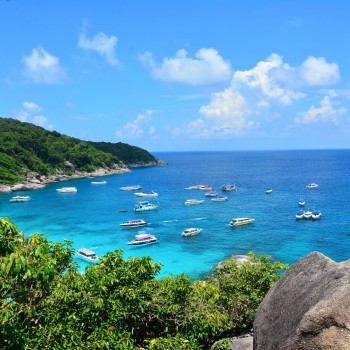
Similan Islands
When to visit: November to mid-May.
The Similan Islands archipelago is one of the most famous diving destinations in the country- consists of eleven islands called Koh Bangu, Koh Bon, Koh Ha, Koh Hin Pousar, Koh Huyong, Koh Meang, Koh Payan, Koh Payang, Koh Payu, Koh Similan, and Koh Tachai. All are located in the Mu Koh Similan National Park, covering over 140 square kilometers.
Situated off the Phang Nga Province coast in southern Thailand, the waters surrounding the islands boast gorgeous coral reefs and underwater rock formations that take on many unique shapes. The marine life around the Islands is exceptionally stunning and incomparable in Thailand and the region.
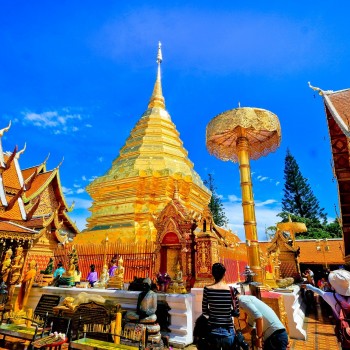
Wat Phra That Doi Suthep
When to visit: Between mid-October and mid-April
Wat Phra That Doi Suthep is an essential and symbolic city landmark and an impressive embodiment of the ancient Lanna kingdom. Still, it is one of Thailand’s holiest Buddhist sites, with enormous historical and spiritual significance.
Located 25 km away from the central city and situated atop the Doi Suthep mountain amidst the dense forests of the Doi Suthep National Park, most favorite tourist spot for a large number of visitors, including devout pilgrims, this jaw-dropping temple and intricately marvelous decorated temple, crowned with a 79-feet- tall, gilded Chedi (Thai-style stupa) that blazes like a beacon in the sun and dramatic views of the surrounding countryside and Chiang Mai, spread out below.

